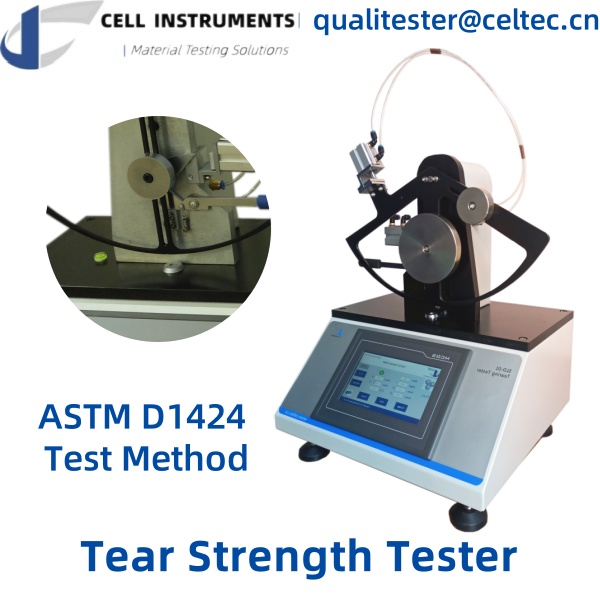Choosing the Right Tear Strength Tester: Exploring ASTM D1424 and ISO 6383 Compliance
Introduction of Tear strength Tester
Tear strength, also known as tear resistance, is a vital property for many materials, especially in industries like packaging, textiles, and medical devices. Understanding how to measure and interpret tear strength is crucial for ensuring material durability and suitability for various applications. In this article, we will explore the fundamentals of tear strength testing, focusing on the ASTM D1424 test method and the use of a tear strength tester, particularly in the context of fabric testing.
What is Tear Strength?
Tear strength refers to the ability of a material to withstand tearing forces without being damaged. This property is critical in applications where materials are subject to mechanical stresses, such as in packaging, clothing, and industrial textiles. A material with high tear strength is less likely to fail under tension, making it more durable and reliable.
Why is Tear Strength Important?
In industries like packaging and textiles, material failure can lead to significant product loss, customer dissatisfaction, and safety hazards. Testing for tear strength ensures that materials meet the necessary standards for durability and performance. It also helps manufacturers select appropriate materials for their products, reducing the risk of failure during use.
ASTM D1424 Test Method
ASTM D1424, also known as the “Elmendorf Tear Test,” is a widely used standard for measuring the tear strength of materials, particularly textiles and fabrics. This test method involves using a pendulum device to apply a force to a pre-slit material sample. The energy required to propagate the tear is measured, providing a quantifiable value for the material’s tear strength.
How is Tear Strength Measured?
The test process typically involves the following steps:
- Sample Preparation: A standard-sized sample of the material is cut, with a slit made at one end.
- Tear Propagation: The sample is placed in the tear strength tester, where a pendulum arm is released to continue the tear along the slit.
- Energy Measurement: The energy loss by the pendulum during the tear is measured and converted into a tear strength value.
Applications of Tear Strength Testing
Tear strength testing is essential in various industries, including:
- Textiles: Ensuring fabrics can withstand daily wear and tear.
- Packaging: Evaluating the durability of packaging materials against mechanical stress.
- Medical Devices: Assessing the strength of materials used in medical packaging to prevent contamination.
Choosing the Right Tear Strength Tester
When selecting a tear strength tester, it’s important to consider the specific needs of your application. The SLD-01 Tear Tester from Cell Instruments is an excellent choice, offering:
- PLC Control and HMI Touch Screen: For precision and ease of use.
- Wide Test Range: Accommodating various materials, from light fabrics to heavy-duty textiles.
- Pneumatic Specimen Clamping: Ensuring consistent and accurate test results.
ASTM D1424 vs. ISO 6383
Both ASTM D1424 and ISO 6383 are standards used to measure tear strength, but they apply to different material types and testing methods. ASTM D1424 is primarily used for textiles, while ISO 6383 covers plastic films and sheets. Understanding the differences between these standards helps ensure accurate testing and compliance with industry requirements.
FAQ
- What is the purpose of tear strength testing?
- Tear strength testing is used to evaluate a material’s ability to resist tearing, which is critical for ensuring its durability and suitability for various applications.
- How does ASTM D1424 differ from ISO 6383?
- ASTM D1424 is used for testing textiles, while ISO 6383 is used for plastic films. Both standards provide methods for measuring tear strength but are tailored to different material types.
- What industries benefit from tear strength testing?
- Industries such as textiles, packaging, and medical devices benefit from tear strength testing by ensuring their materials can withstand mechanical stress.
- Why is the SLD-01 Tear Tester recommended?
- The SLD-01 Tear Tester is recommended for its precision, wide test range, and ease of use, making it ideal for various material types and testing requirements.
- What are the key features to look for in a tear strength tester?
- Key features include a wide test range, precision controls, pneumatic clamping, and compliance with relevant standards like ASTM D1424.

